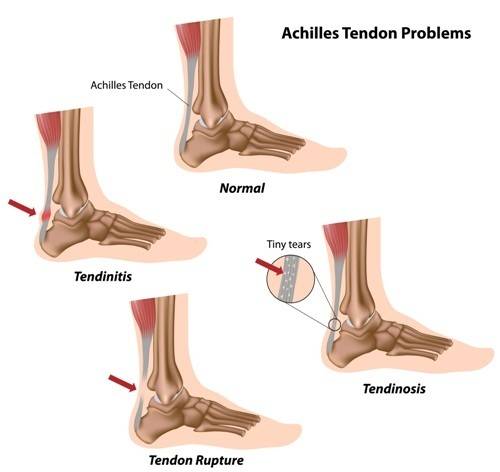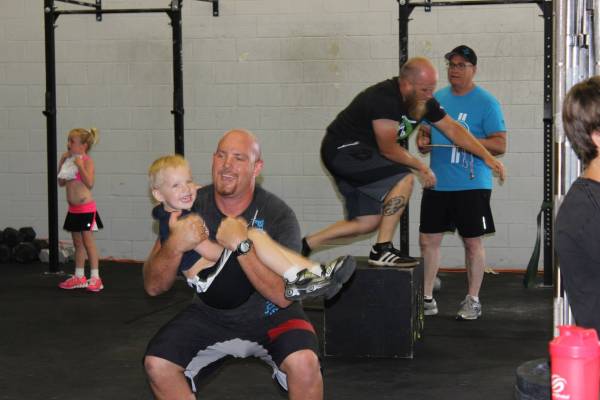For centuries, the heel of the foot has symbolized vulnerability. That’s largely because it houses the Achilles tendon, which connects the calf muscle to the heel bone.
For centuries, the heel of the foot has symbolized vulnerability. That’s largely because it houses the Achilles tendon, which connects the calf muscle to the heel bone.
The tendon’s namesake, Achilles, was said to have been dipped in the River Styx by his overprotective mother, Thetis, in order to make him invulnerable. She had to hold him by the feet, and the waters didn’t quite make it to the back of his heels, leaving one unfortunate soft spot.
“Thetis dipping the infant Achilles into the river Styx,” by Peter Paul Rubens
But Achilles isn’t the only one with heels susceptible to injury. Over eighty percent of Achilles tendon ruptures occur during recreational sports, affecting high-level athletes and weekend warriors alike. Here are a few lessons to help you prevent and work through these common problems.
Who Is At Risk?
In his article, The 5 Common (and Most Preventable) Running Injuries, coach Jeff Ford explained the role of the Achilles tendon in running and other activities. “Your Achilles tendons are like shocks on your car. They’re the first to absorb the impact before the rest of your body takes the load,” wrote Jeff. This is why athletes whose sports require repeated high-stress actions like jumping are more susceptible to Achilles injuries.
Young athletes should also be wary of Achilles problems. Coach Jeanne Goodes explained a common condition called Sever’s disease in her article, Sever’s Disease: The Pain of Adolescent Growth Spurts.
There are several theories surrounding the cause of Sever’s disease. These range from a tight Achilles tendon, to micro stress fractures of the heel, to biomechanical mal-alignment, to trauma, to flat feet, and even to obesity. But the prevailing theory suggests the onset of Sever’s disease occurs when the child’s growth plate is at its weakest, while a tightened Achilles tendon pulls repeatedly on the growth plate, such as during adolescent growth spurts.
If you are a parent or coach, be on guard for signs of Sever’s disease, particularly during adolescence. These include pain in the heel that increases with movement, stiff or inflexible heels, and limping after activity.
“Your Achilles tendons are like shocks on your car. They’re the first to absorb the impact before the rest of your body takes the load.”
You might have heard men are at a higher risk for Achilles problems than women. Coach Doug Dupont analyzed a study that examined the biomechanics of the ankle and Achilles tendon in his article, Men More Prone to Achilles Injuries Than Women – But Why? The research team investigated Achilles tendon activity during rest, light exercise, and intense exercise in men and women. They found the following results:
Statistically speaking, the force output between men and women was no different, which may come as a surprise. However, after exercise, the Achilles tendon of the women became more compliant, meaning it accepted changing states better. In doing so, it also stored more elastic energy, thus increasing the contribution of force after an eccentric action. The women’s tendons were also more flexible, and possessed less stiffness and rigidity.
Based on these findings, Dupont recommended keeping the area around the Achilles tendon flexible, strengthening the lower legs, and focusing on proper form during activities like running and jumping. While these recomendations certainly won’t hurt women, they are particularly critical for male athletes.

What If I’m Already Injured?
For those who have already learned about their Achilles tendon the hard way, we have a few stories you will relate to. The first comes from coach Brandon Hofer, who ruptured his Achilles tendon during what was supposed to be a fun and casual football game. Brandon shared a couple videos of exercises he used to stay active during his recovery.
Click here to read all of Brandon’s journals and learn more about his recovery journey after a full Achilles tendon rupture.
Diet Can Help Speed the Process
Our next story comes from coach Mike Tromello, who shared about his recovery after a full Achilles tendon rupture. Mike stressed the importance of diet and smart supplementation for a quick recovery. Here’s what his daily regimen looked like:
To relieve inflammation:
- Whole30 Diet Plan: grass-fed meat, wild caught fish, and pastured eggs as much as possible.
- InflammaCore or UltraInflamX: two scoops, one to two times daily
- Traumeric: two capsules daily
- Orthomega 820 Fish Oil: two capsules daily
To clean up cellular debris:
To promote healing:
- Protein: 1.5 grams per kg of body weight
- Great Lakes Collagen Hydrolysate: four tablespoons daily, mixed with fluid
- Buffered vitamin C: 2,000mg twice a day, as tolerated
- Mom’s chicken soup or other source of bone broth

The happiest moment of Mike’s recovery – playing with his kids again.
After about seven months, Mike was able to compete in CrossFit again. To read more about the specifics of his recovery, including a detailed week-by-week outline of his rehab procedure, read his article, Positivity and Persistence: My Story of Recovery From Injury.
The Power of Positivity
Beyond diet and rehab exercises, Mike stressed the importance of positive thinking as an impetus for healing. As he shared, “What I feel was most influential in my recovery is that I remained positive. I saw my situation as a blessing rather than a curse. A means to slow me down and enjoy what life had to offer besides training.”
Maintaining that positive perspective might be the hardest aspect of any recovery. If you’re dealing with an Achilles injury, what are some ways you’ve found to stay positive? Share in the comments below.
You Might Also Enjoy:
- Kobe Bryant’s Achilles Injury: Why It Happened and What We Can Learn
- Craving Success? Then Respect the Process
- Setbacks and Mind Games During Injury Recovery
- What’s New on Breaking Muscle Today
Photo 1 by Peter Paul Rubens [Public domain], via Wikimedia Commons.
Photo 2 courtesy of Shutterstock.






